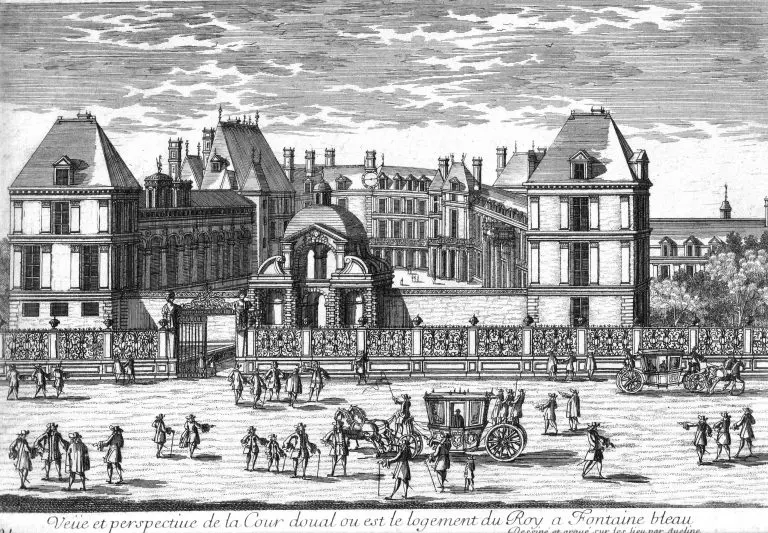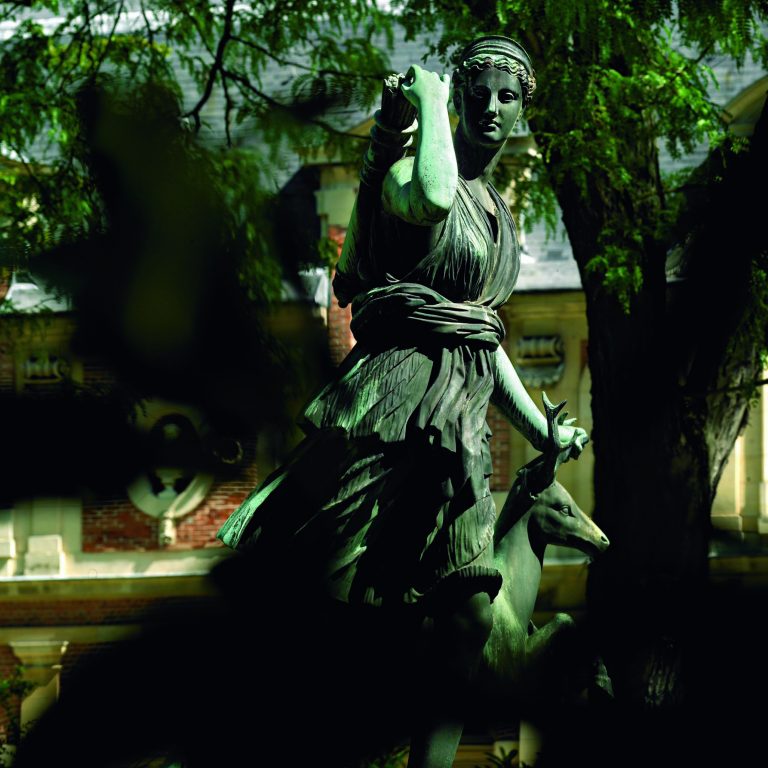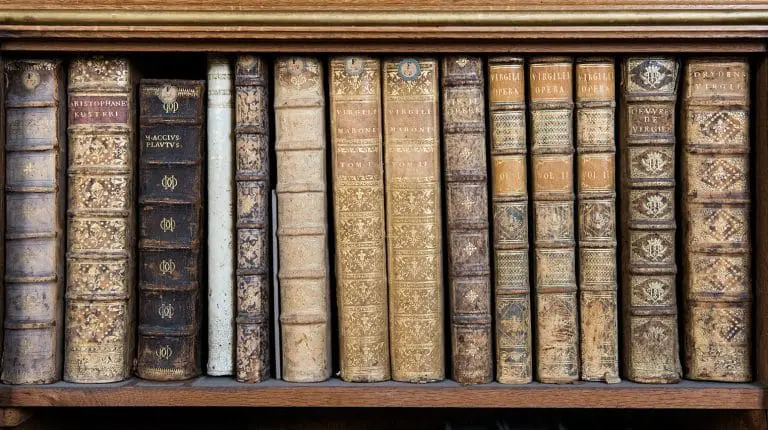The first Fontainebleau king
What was Fontainebleau like in medieval times? The old Oval Courtyard still retains roughly the same layout as this first castle, as well as the only vestige with an obvious medieval appearance: the keep. Taking the form of a large square tower, this massive medieval dwelling could have been built in the early 12th century or in the late 11th century. For centuries, the King’s Chamber was located on its first floor. On either side of this tower there was a group of buildings leaning against a thick curtain wall, grouped around an oval-shaped courtyard. An old gate to the south served as the entrance.
The first king whose presence in Fontainebleau we can attest to is Louis VII, the sixth sovereign of the Capetian dynasty. In 1137, the same year he ascended the throne, the young 17-year-old king issued a royal charter from his ‘palace’ of Fontainebleau. During his reign, Louis VII stayed many times in Fontainebleau. It is to him, in 1169, that the castle owes the foundation of a chapel dedicated to the Virgin Mary and Saint Saturnin. If the dedication to the Virgin seemed quite natural for a king who had made the Virgin the true ‘Queen of France’, the dedication to Saint Saturnin might seem more surprising: It was the result of the king’s royal devotion to this evangelist from south-western Gaul, martyred in Toulouse, who was considered to be one of the first disciples of Christ. The Chapel of Fontainebleau, consecrated by Thomas Beckett while in exile in France, attested to the prestige of the medieval palace.
The monastery of Saint Louis
As early as the Middle Ages, Fontainebleau was popular with the sovereigns as a hunting castle. The hunt was a ritual, a sign of power and rank. In the 12th century, even though bears and wild boar were still the traditional game of the princely hunts, deer, endowed by the Church with a Christic symbolism, began to become the royal game par excellence. Although not all kings liked to hunt, the hunt nevertheless remained a ritual that was both wild and liturgical, allowing the sovereign to fully accomplish its practice.
Indeed, in the 13th century, King Louis IX, who would become known as Saint Louis, liked to retreat to his ‘dear deserts of Fontainebleau’ to devote himself to it and pray. In 1239, unable to leave Fontainebleau due to a serious illness, he vowed to go on a crusade should he recover. Upon his return in 1254 from a calamitous expedition to Egypt and the Holy Land, Saint Louis founded a convent near the castle: the Convent of the Trinitarians.
As a redemptive order whose mission was the redemption and liberation of Christian prisoners in the Mediterranean, the Trinitarian monks (also known as ‘Mathurins’) were given land to the west of the castle on which a hospital, convent buildings and a church were built in 1259. The presence of a religious community in the immediate vicinity of a royal residence was nothing unusual, but that of Fontainebleau would prove to be of decisive importance for the development of the royal building. The atypical physiognomy of the castle as we know it today came about under Francis I through the linking, then merging, of the castle walls with the religious buildings.
A library and steam rooms
In the 14th century, in the midst of the black plague epidemic, Fontainebleau became a regular and welcome refuge for kings who, while indulging in ‘frolics’ and hunting, enjoyed the salubriousness of the air, which was considered healthier and more salvific than that of Paris. The medieval palace had seen the birth, in 1268, of the future King Philip IV the Fair. It was in this same royal residence, on the first floor of the old keep, that this ‘iron king’ died in 1314, after a reign that considerably strengthened the authority of the Capetians.
In 1323, Isabella of France, Queen of England, came to Fontainebleau to visit her brother, Charles IV the Fair (son of Philip IV). In the second half of the 14th century, Charles V set up a library there, the first library in the history of the castle and a feature that has remained indispensable to this day. In 1404, the famous Queen Isabeau of Bavaria obtained, from her husband Charles VI, ‘the Beer Forests and the towns and districts of Fontainebleau and Moret’. She resided in the castle, where she had the first steam rooms installed, which, like the library, would be consigned to the posterity of Fontainebleau, linked to the mythology of water and springs. The first ‘bathing lady’ of Fontainebleau, Queen Isabeau was the last great occupant of the medieval castle…
Because of the Hundred Years’ War (1337 – 1453), the court, indeed, left the North of France for the Loire Valley. The castle, which had withstood the great hours of the Middle Ages and the assertion of royal power, was abandoned to the wear and tear of time. What was left of it in 1527? A prestigious uninhabitable and uninhabited ruin, a castle ‘of very ancient lineage’ whose story already seemed to have been consigned to the past…


